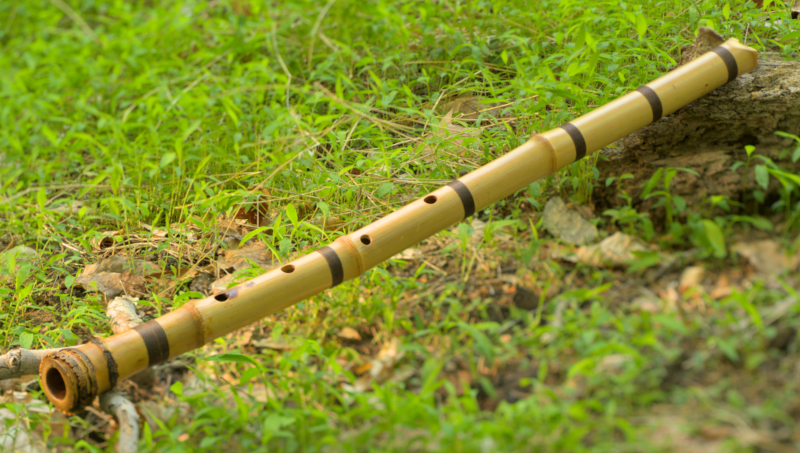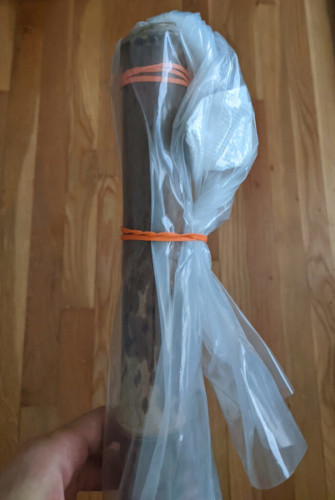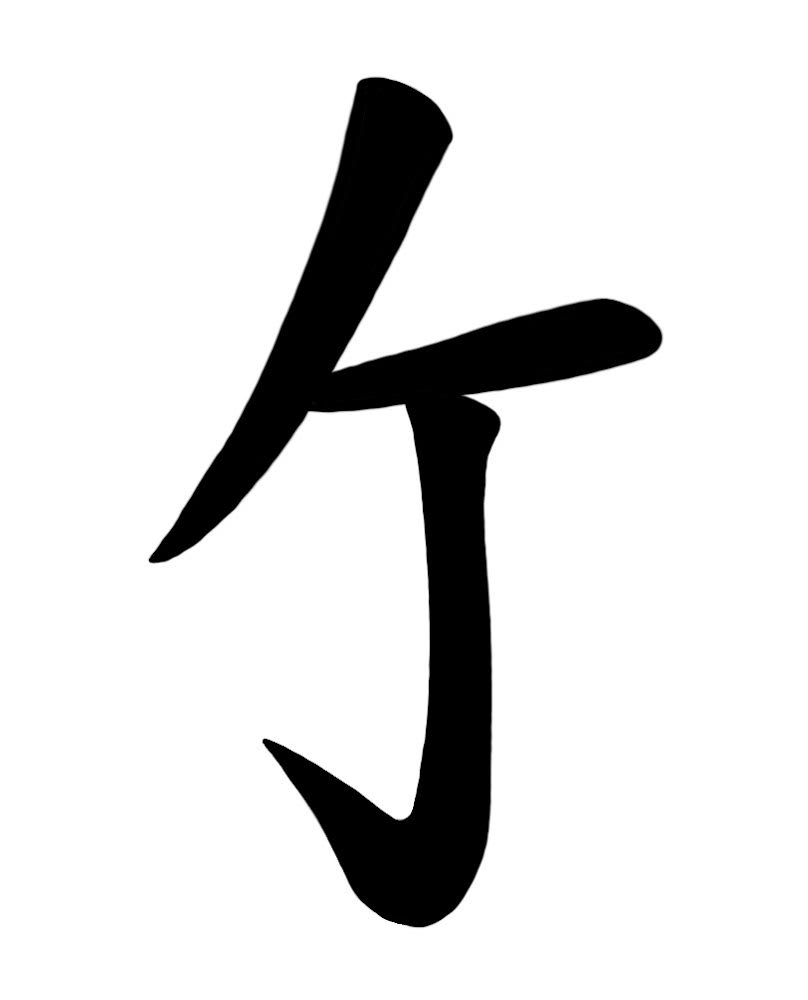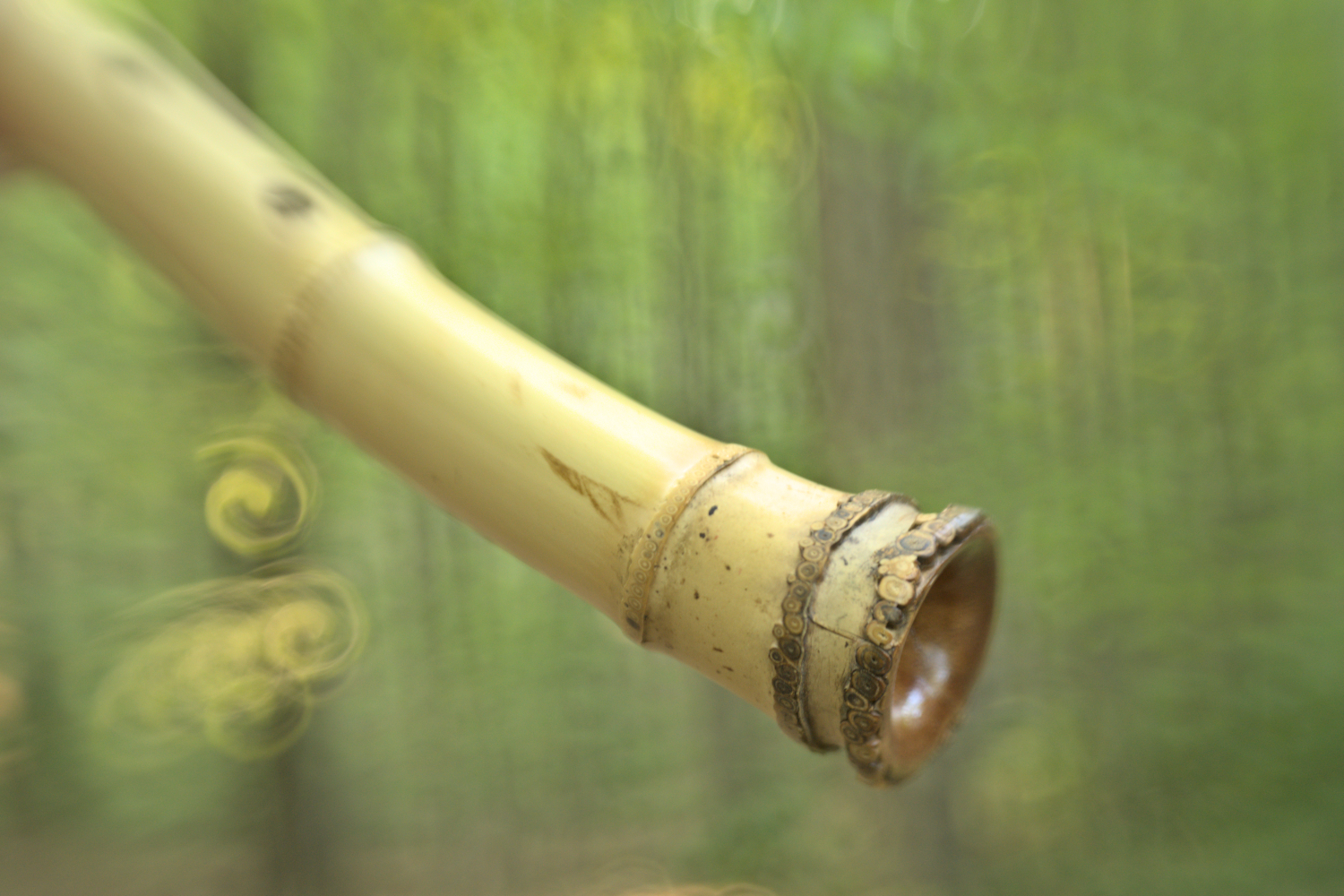How to Care for Bamboo Flutes: Bindings, Cracks, and Cleaning
Compared to many other musical instruments, and even silver flutes, bamboo flutes are actually easier to care for and repair. On this page, I’ll show you just how simple caring for your bamboo instruments can be — especially with my bamboo flutes.
Bindings for Crack Repair and Prevention

When an unbound bamboo flute develops cracks, bindings are applied to close and repair them. However, when applied proactively, bindings greatly help to prevent cracks in the first place. With shakuhachi, this is a tradition rooted in the practices of the revered Komuso monks. Beyond their utility, they’re true badges of honor, signifying deep dedication and respect.
Lifelong Instruments, Lifetime Promise
If you purchase a flute from me and decide to have it bound before I send it to you — or if it’s already bound — it comes with lifetime free repairs. On the rare chance that a crack ever affects its playability, I’ll restore it at no cost. (Contact me for binding options and quotes.)
Care for Unbound Shakuhachi: How to Prevent Cracks
If your bamboo flute is not bound, it’s best to avoid extremes in temperature and humidity whenever possible. To significantly reduce the risk of cracks, use humidified storage when the humidity drops below 50%. Below is one of the simplest methods for this:

As shown in the image above, a damp piece of material is placed between two ‘twists’ at the top of a plastic storage bag and secured with a rubber band. Be sure to regularly check the damp material for mold and replace it as necessary, or clean it with distilled white vinegar or 90% Ethanol or IPA (Isopropyl alcohol). You can use a small sponge, paper towel, or a piece of fabric.
Keeping the Bore Clean
After each playing session, if there’s moisture in the bore, simply swab it using the tool provided. Always protect the blowing edge with the soft pad of your thumb. Rather than one quick motion, allow the swab to rest a few seconds at each point along the bore to better absorb moisture.
Maintaining good oral hygiene — such as brushing your teeth before playing — often eliminates the need for additional cleaning. However, if necessary, you can clean the bores of my shakuhachi using distilled white vinegar or 70-90% ethanol or isopropyl alcohol.
To clean:
- Soak your bore swab cloth in ethanol or IPA.
- Wring out excess back into the container or jar.
- Slowly run the damp swab through the bore.
- Repeat if needed.
- Allow to air-dry.
Oiling: Do Not Do it!
Under no circumstances should oils be applied to my bamboo flutes — even essential oils. This can make any future alterations or repairs impossible, as well as possible damage them over time. I don’t recommend oiling bamboo flutes by other craftspersond either for these same reasons.
Care for Bamboo, It Cares for You
As you can see, caring for your bamboo flutes is remarkably simple. There are no moving parts or components to replace — something that’s all too common with most other musical instruments.
By following these simple guidelines, you’ll enjoy the profound simplicity of bamboo flutes for a lifetime. Thank you for taking the time to learn about caring for bamboo. I know you’ll have many great years with your instruments, Josen
(Below, you’ll find a detailed video guide on how to bind shakuhachi and other bamboo flutes.)
How to Topically Bind Shakuhachi & Other Bamboo Flutes
I made this videos for the curious, but also as a service to the community for those that wish or need to try their hand at binding cracks in shakuhachi and other bamboo flutes (with thinner bamboo exercise caution with the clamping pliers).
Materials and tools used:
- Bonded twill nylon or poly thread/cord; ~3 yards per binding, 0.5mm dia. and up to 1mm (Commercial Size 207, Tex 210 and up to Size 554, Tex 600).
- NB: soft waxed round cord (for leather work and book binding) is by far the easiest to work with — gripping instead of slipping. However, it can’t be sealed with glue, though the wax provides some protection.
- Razor knife.
- Locking Forceps (teeth wrapped with electrical tape).
- Locking vise pliers/grips (teeth coated in hot glue or heat-shrink rubber tubing).
- Glue or lacquer to finish/seal this type of cordage (epoxy is best).

